The postwar era in America brought a renewed interest in sports cars, as returning soldiers from World War II encountered sleek European designs. These impressive vehicles inspired a wave of innovation in the United States, giving birth to numerous unique and largely forgotten American sports cars from the 1940s and 1950s.
Among these fascinating creations, 50 of them stand out as true icons of postwar America. In this article, we will explore the stories behind these captivating vehicles and celebrate the golden age of American sports cars.
Notable Postwar Sports Car Models

In the postwar era, several sports cars became significant in automotive history. The Kaiser Darrin stood out with its sliding doors and fiberglass body. The Woodill Wildfire also featured a fiberglass body, and the Maverick Sportster impressed with a V8 engine. The small but powerful Crosley Hotshot became a favorite among racing enthusiasts. These models highlighted American innovation in the sports car industry.
The Kaiser Darrin

The Kaiser Darrin, designed by Howard “Dutch” Darrin in the 1950s, is a forgotten American sports car. Featuring a lightweight fiberglass body and unique sliding doors, it aimed to compete with European models. Only 435 units were produced, making it a rare collectible. With two engine options, it reached speeds up to 124.5 mph. Despite its innovation, sales struggled due to competition and Kaiser Motors’ financial instability.
The Crosley Hotshot
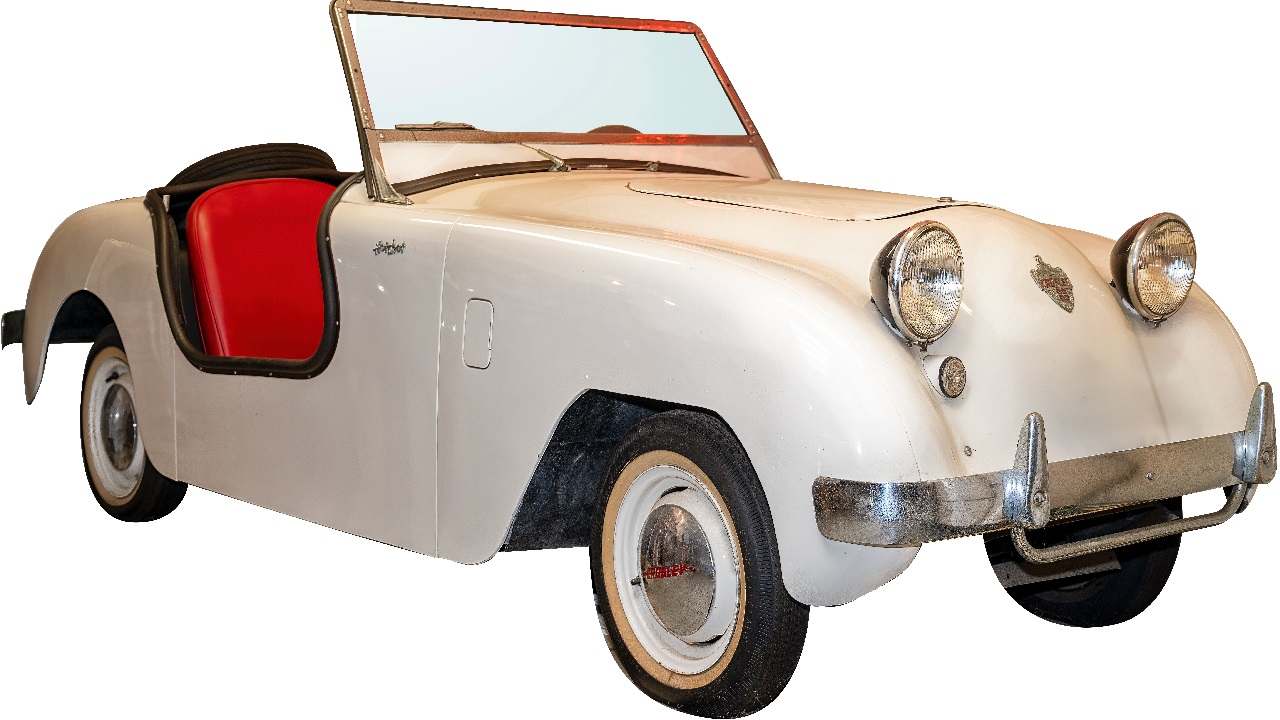
The Crosley Hotshot, America’s first postwar sports car, debuted in 1949. Designed by Powel Crosley and engineer Paul Klotsch, it marked a departure from Crosley’s minimalist vehicles.
With an 85-inch wheelbase, it was 5 inches longer than earlier models and had drop-down side panels instead of traditional doors. Produced from 1949 to 1952, nearly 2,500 Hotshots were built, along with variations like the Super Hotshot, Super Sports, and Super Sport. These compact sports cars paved the way for the Chevrolet Corvette.
Glasspar G2
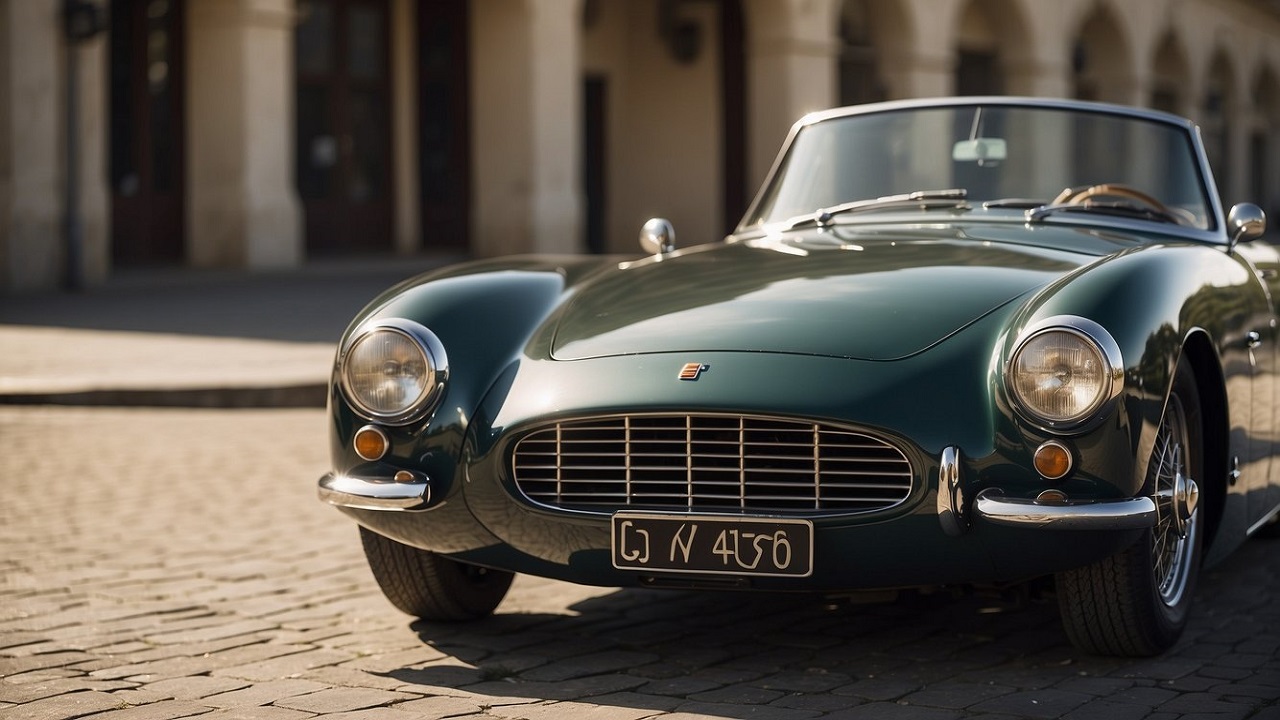
The Glasspar G2, introduced by Bill Tritt in 1949, was America’s first production all-fiberglass sports car, predating the Corvette by two years. Produced from 1951 to 1955, only about 100 were built. These historic cars remain a cherished part of America’s postwar sports car era.
Edwards R-26

The Edwards R-26 was a remarkable postwar American sports car. Created in 1949, it was designed and built by Sterling Edwards. As an elegant and high-performance vehicle, the R-26 gained popularity quickly. This early coachbuilt sports car managed to race and win the Del Monte Trophy Race. Interestingly, the R-26 also won the inaugural Pebble Beach Concours d’Elegance, a prestigious honor.
Cunningham C-3
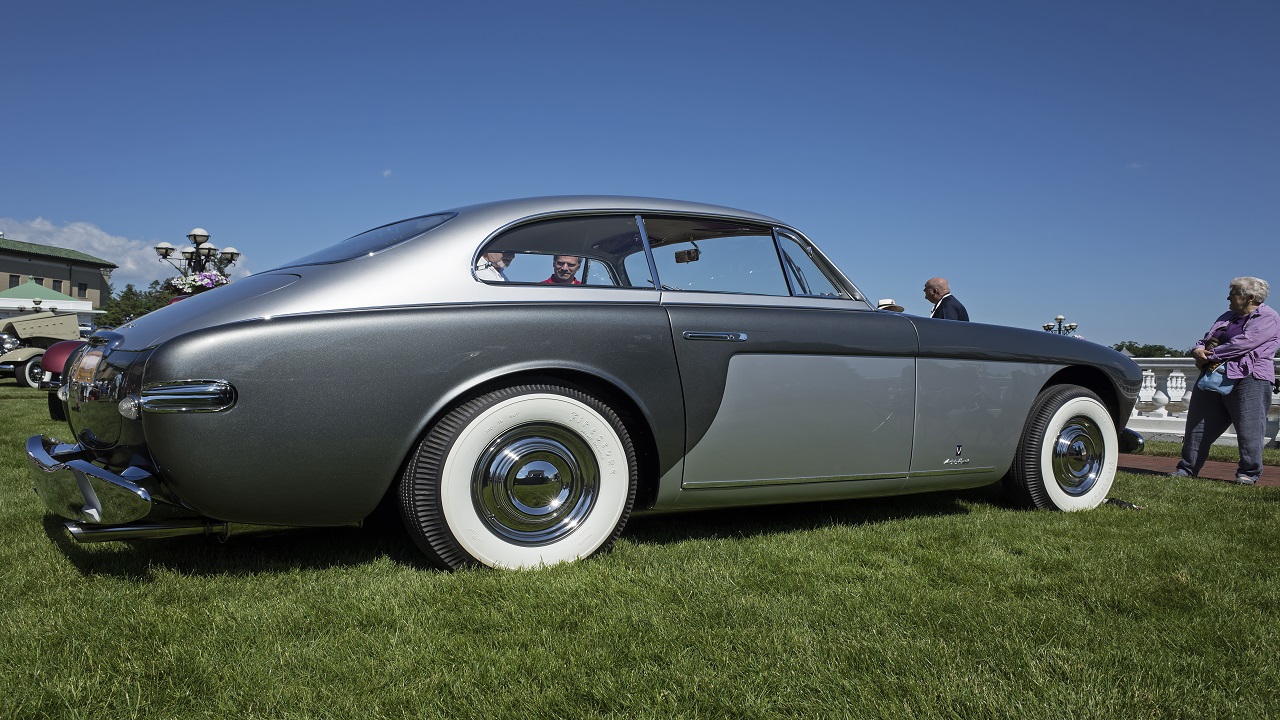
The Cunningham C-3, a Grand Tourer from the early 1950s, was built by the B. S. Cunningham Company to homologate Briggs Cunningham’s racing cars for the 24 Hours of Le Mans. This rare American car featured a HEMI engine and an Italian body. Only 26 units were produced between 1952 and 1955, blending American power with European design.
The Woodill Wildfire
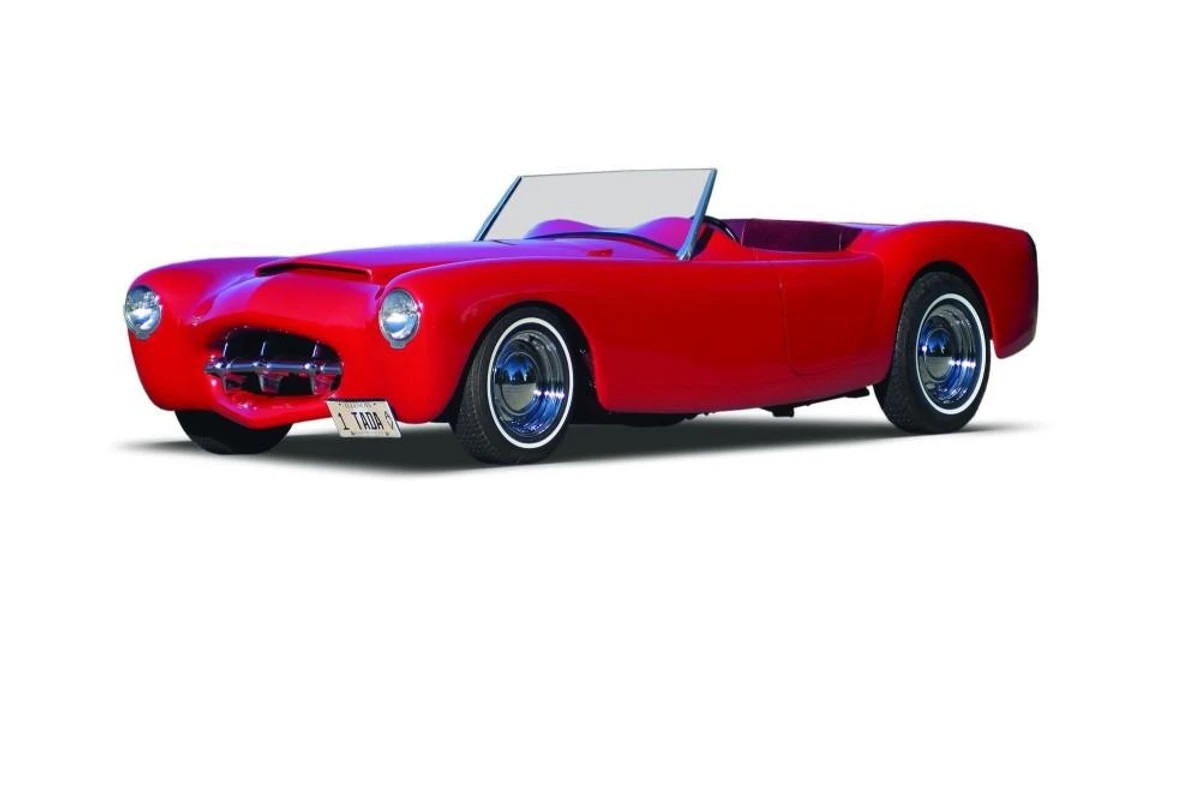
The Woodill Wildfire, built from 1952 to 1958 by Dodge and Willys dealer Blanchard Robert “Woody” Woodill, featured a Glasspar fiberglass body. It is credited as the first complete fiberglass car, with around 15 produced and 285 sold as kits.
Willys nearly mass-produced it as the Willys Wildfire, but Kaiser Motors’ 1953 acquisition of Willys altered its fate. Despite limited production, the Woodill Wildfire remains an iconic example of America’s postwar sports cars.
Muntz Jet
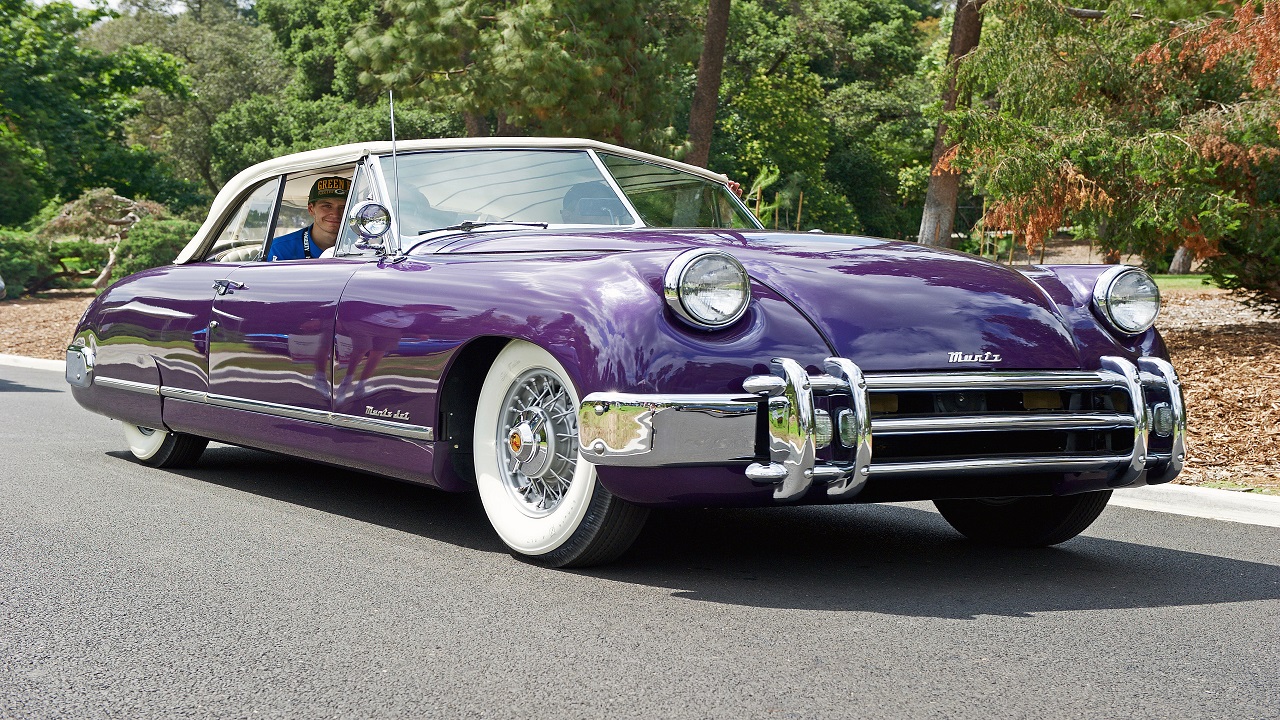
The Muntz Jet, produced from 1949 to 1954, is a notable American sports car developed by Frank Kurtis and later Earl “Madman” Muntz. Often seen as America’s first personal luxury car, it featured a two-door hardtop convertible design.
Despite its short production run, the Muntz Jet is a key part of postwar automotive history. With a V8 engine delivering up to 160 hp, it aimed to compete with European sports cars. Though production was brief, the Jet symbolizes American automotive ingenuity and remains a classic.
Maverick Sportster

The Maverick Sportster, designed by H. Sterling Gladwin in 1952, is a notable example of America’s forgotten postwar sports cars. With its elegant look, it quickly gained popularity. Only seven boat-tail speedsters were produced from 1952 to 1968.
Featuring a fiberglass body, the Maverick Sportster was marketed as the “world’s largest fiberglass-bodied car.” Maverick Motors used postwar Cadillac chassis and 331 cubic inch Cadillac engines for their limited production. The car made history by appearing in the 1953 and 1955 Pebble Beach Concours d’Elegance.
Allard J2

The Allard J2, a British-American sports car from the postwar era, was designed for the American market and achieved motorsport success. Powered by various American V8 engines, the J2 gained attention for its racetrack performance. Notable drivers like Carroll Shelby and Zora Duntov found early success with the Allard J2.
Arnolt-Bristol

The Arnolt-Bristol, a collaboration between American engineer Stanley “Wacky” Arnolt and British manufacturer Bristol, was produced from 1953 to 1959. This stylish and powerful sports car featured a 2-liter Bristol inline six-cylinder engine, delivering 130 horsepower and weighing around 2,100 pounds.
With smooth, curving lines, the car had an elegant look. A total of 142 units were produced, including six coupés and two special models. Today, the Arnolt-Bristol remains a notable piece of automotive history, symbolizing the creative ingenuity of its era.
Nash-Healey
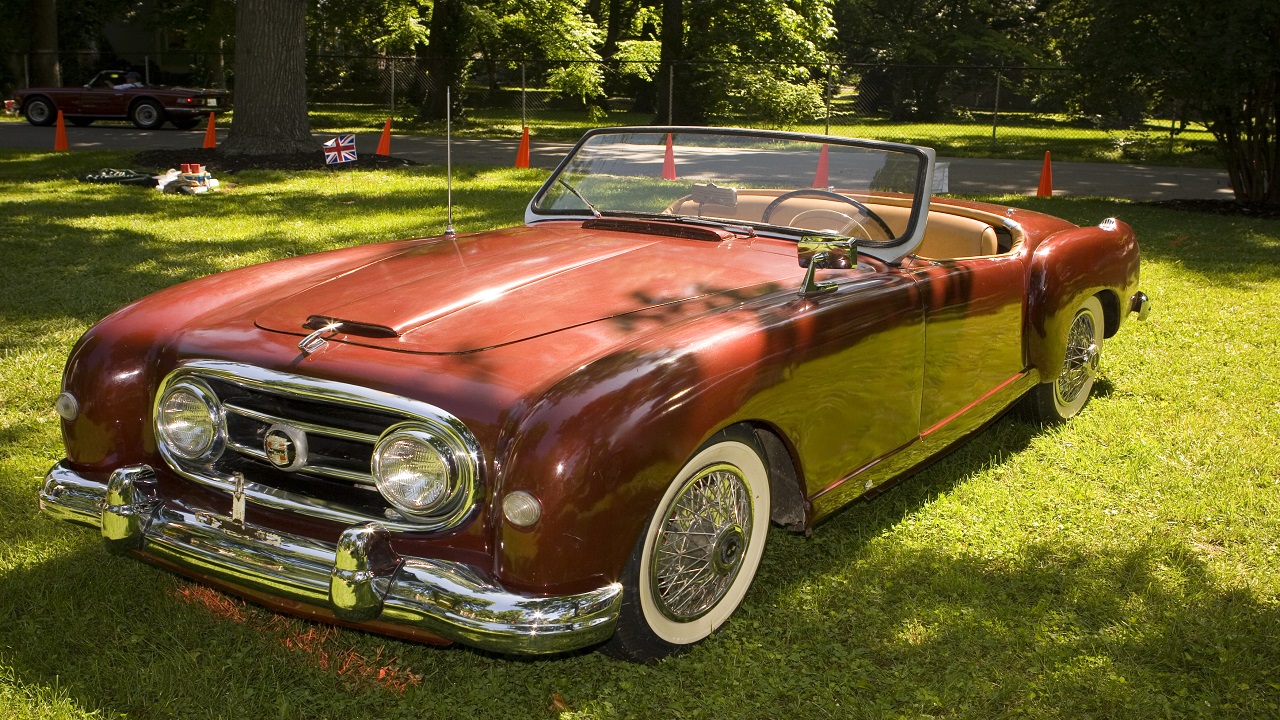
The Nash-Healey, produced from 1951 to 1954, was America’s first postwar sports car. This three-seater luxury vehicle was a collaboration between Nash-Kelvinator and the British Donald Healey Motor Company. It used components from the Nash Ambassador, including a 3.8-liter inline-six engine with an aluminum cylinder head and two SU carburetors, producing 125 hp. Paired with a three-speed manual gearbox, the Nash-Healey offered a thrilling driving experience. It remains an iconic part of America’s automotive history.
Powell Sport Wagon

The Powell Sport Wagon, created by brothers Hayward and Channing Powell in the mid-1950s, was an innovative and affordable “sportsman’s car.” Initially involved in radio production, they later moved to motor scooters and eventually cars.
Assembled in Compton, California, the car aimed to sell for under $1,000 (around $10,900 today). Using recycled Plymouth chassis from the 1940s, the Powell Sport Wagon offered a more refined ride and came in both station wagon and pickup truck formats.
Excalibur J

The Excalibur J, designed by Brooks Stevens in the 1960s, was an American sports car priced at $2,000. It used inline-six engines from Willys and Henry J. Inspired by Stevens’ 1928 Mercedes SS roadster, the Excalibur J holds a unique place in post-war American sports car history. Despite its limited fame, its stylish design and powerful performance make it a notable example of America’s automotive past.
Bocar XP-5
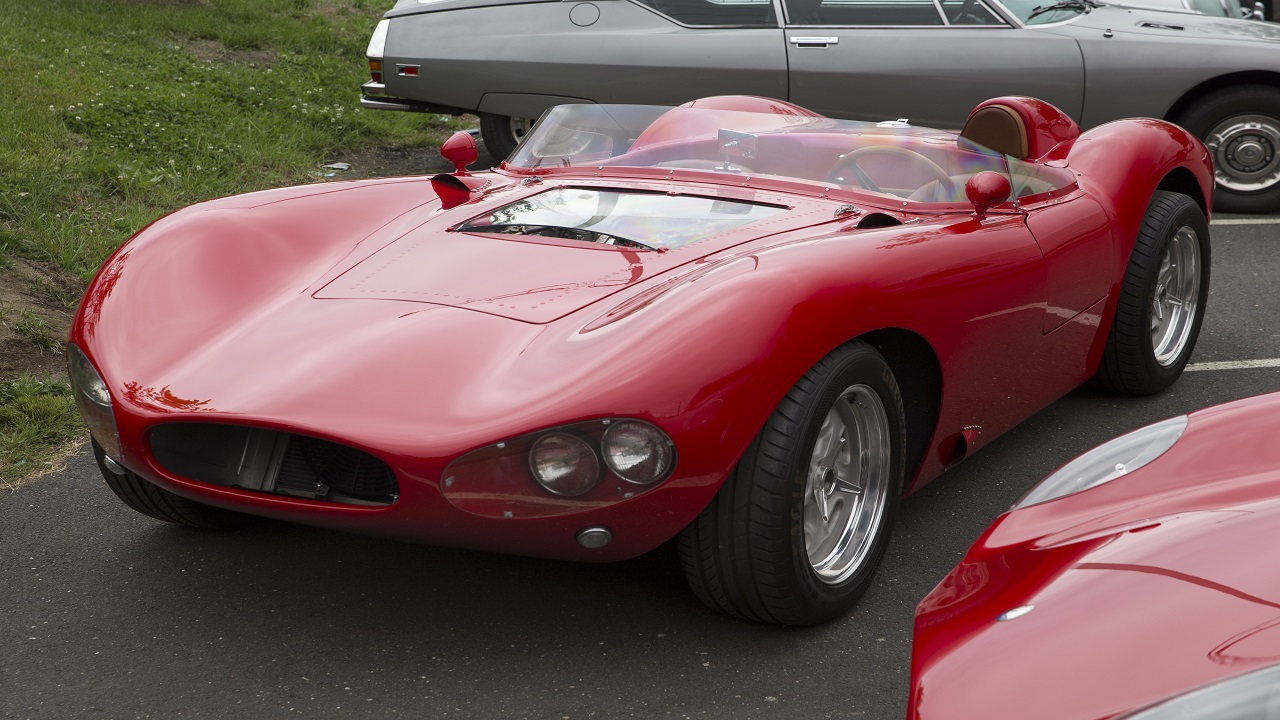
The Bocar XP-5, launched in 1959, is an American V8 sports car developed to rival European models. It featured a high-strength chromoly steel space frame and a suspension from the Porsche 356/VW Beetle. Typically equipped with a Chevrolet 283 or 327-cubic inch V8 engine, it produced 290 hp and weighed between 1,650 and 2,100 lbs.
Designed for racing enthusiasts, the XP-5 had a low-profile high windscreen and stood just 34 inches tall. While an average example might fetch around $160,000, the prized Meister Bräuser III sold for $412,500 at a 2016 auction. The Bocar XP-5 remains a symbol of American engineering and passion for sports cars.
Devin SS
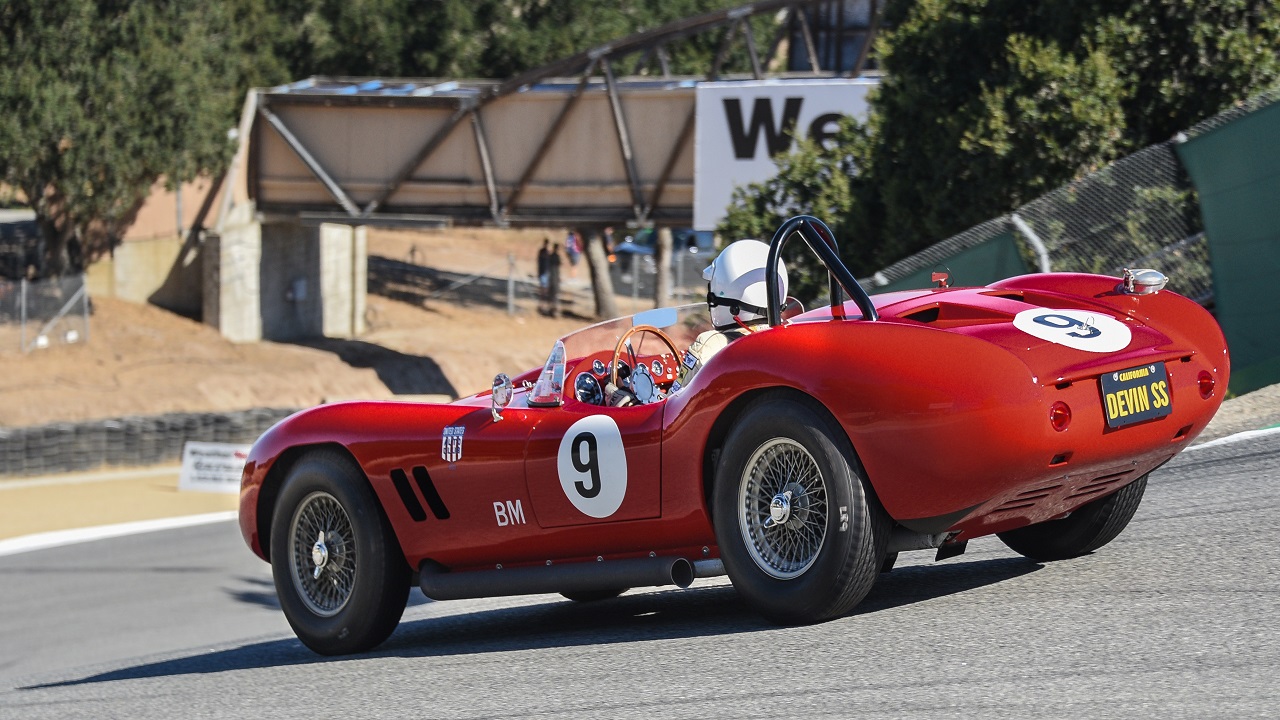
The Devin SS was a lightweight, high-performance sports car that emerged in the postwar era. With its sleek design and powerful engine, it captured the attention of racing enthusiasts. Weighing under 2,000 lbs, the Devin SS boasted impressive 0-60 times in 4.8 seconds and 0-100 mph in 12.9 seconds. Performance seekers found the combination of Chevrolet V-8 engines and nimble handling irresistible.
Griffith Series 200

The Griffith Series 200, a lightweight fiberglass sports car from the 1960s, combined a British-built TVR body with an American Ford V-8 engine to rival the Shelby Cobra.
Developed by New York Ford dealer Jack Griffith, only 192 units were produced, making it a rare and coveted car. It could accelerate from 0 to 60 mph in about 4 seconds and reach a top speed of 150 mph. The Griffith Series 200 remains a notable piece of U.S. automotive history.
Apollo GT

The Apollo GT, produced from 1962 to 1964, was an Italian-American sports car designed by Ron Plescia and engineered by Milt Brown. Featuring Italian bodywork and chassis by Intermeccanica, it came in two styles: a two-seater convertible and a fastback.
Powered by an American V8 engine, the Apollo GT offered both stunning looks and solid performance. Its rarity and distinctive design make it a notable, though often forgotten, piece of postwar automotive history.
Panoz Esperante
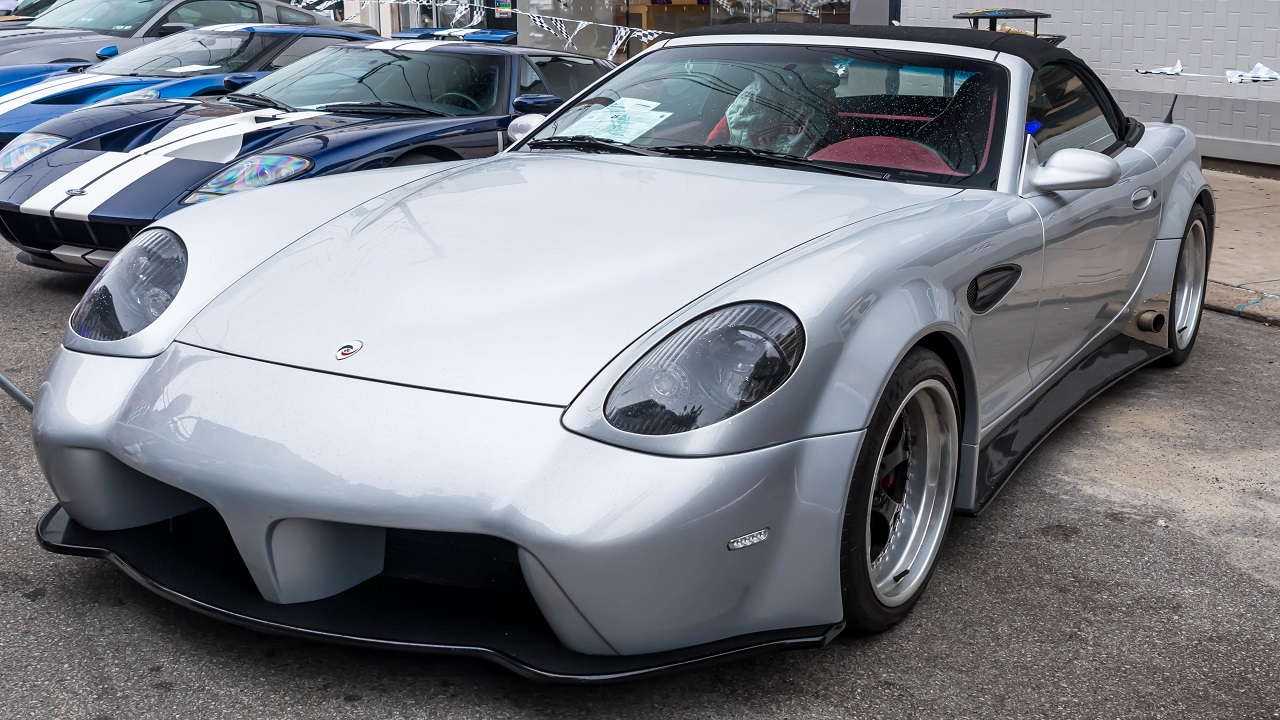
The Panoz Esperante is an American sports car that deserves more recognition. It boasts a 3.7 second 0-60 mph time and a top speed of 172 mph. A descendant of the Panoz Roadster, this car has a limited production history, with only a handful of its GTLM variants made. With its Ford-powered engine and impressive performance, the Panoz Esperante represents a true American gem.
Vector W8

The Vector W8 is a rare American sports car produced between 1989 and 1993 by Vector Aeromotive Corporation. Its unique design and powerful performance made it an iconic but often overlooked gem. Featuring a twin-turbocharged V8 engine and wedge-shaped body, the W8 was ahead of its time. Only 19 units were ever built, making it a coveted collectible among car enthusiasts.
Chaparral Cars

Chaparral Cars, founded in 1962 by Hap Sharp and Jim Hall, was an innovative American racing team active from 1963 to 1970. Known for groundbreaking designs, they created the Chaparral 2J with a 650-horsepower Chevrolet engine.
Their cars featured cutting-edge technology, such as the 2F racing coupe and the Chaparral 2 with a Powerglide-derived two-speed transmission. Chaparral left a significant mark on postwar American sports car history.
Studebaker Avanti

The Studebaker Avanti, a personal luxury coupe designed by Raymond Loewy, was produced from June 1962 to December 1963 to compete with Ford and Chevy. It broke multiple land speed records and featured innovative safety features. Despite production issues and funding problems, it remains a cult classic.
Shelby Cobra

The Shelby Cobra, an American classic, resulted from a collaboration between Carroll Shelby and British automaker AC Cars. It featured a lightweight AC Ace body and powerful Ford V8 engines. This sports car challenged major competitors like the Chevrolet Corvette and the Bill Thomas Cheetah. Today, the Cobra’s legacy continues to inspire enthusiasts and collectors worldwide.
Bricklin SV-1

The Bricklin SV-1, produced from 1974 to 1975, was an American sports car focused on safety and design. Named “Safety Vehicle One,” it featured gull-wing doors and a composite body made of acrylic resin bonded to fiberglass. With only about 2,850 units made, the Bricklin SV-1 remains a unique piece of American automotive history.
Cheetah
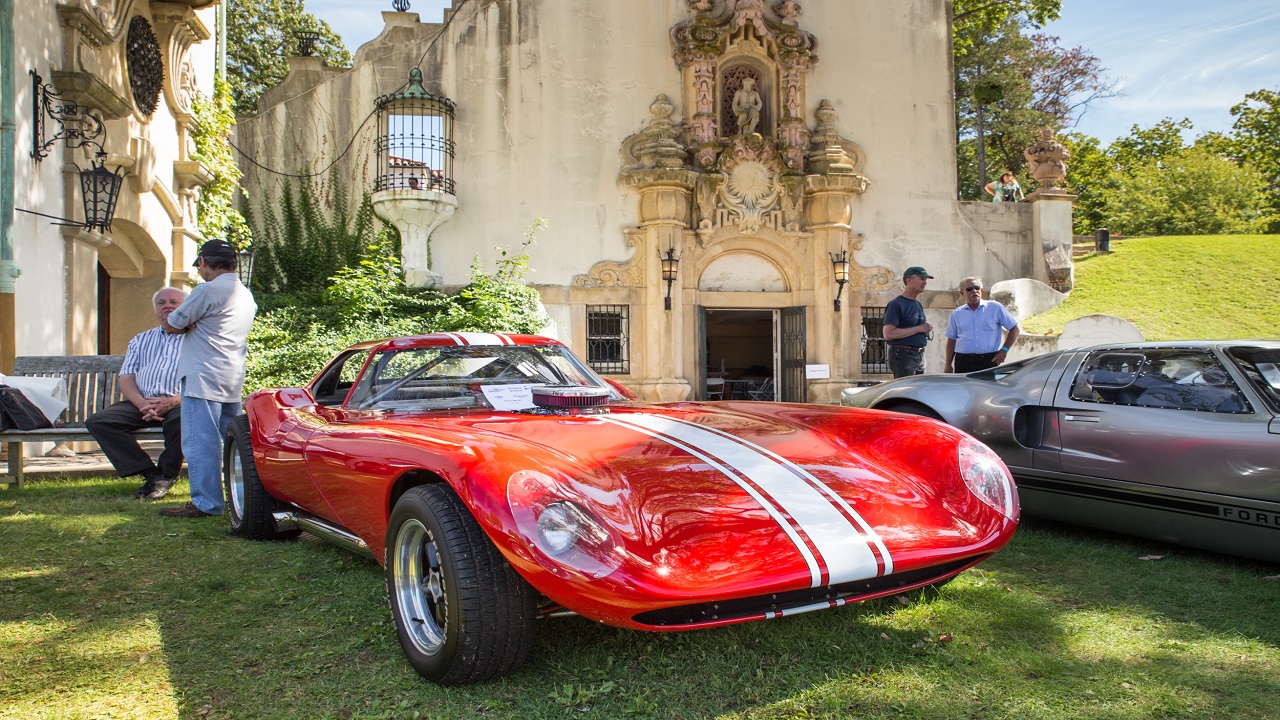
The Cheetah, built from 1963 to 1966, is an American sports car designed by Chevrolet tuner Bill Thomas to compete with the Shelby Cobra. Featuring an aluminum body, chrome-moly tube-frame chassis, and a 90-inch wheelbase, it was a formidable competitor. Today, the Cheetah remains an intriguing and often-overlooked piece of automotive history.
Mosler MT900
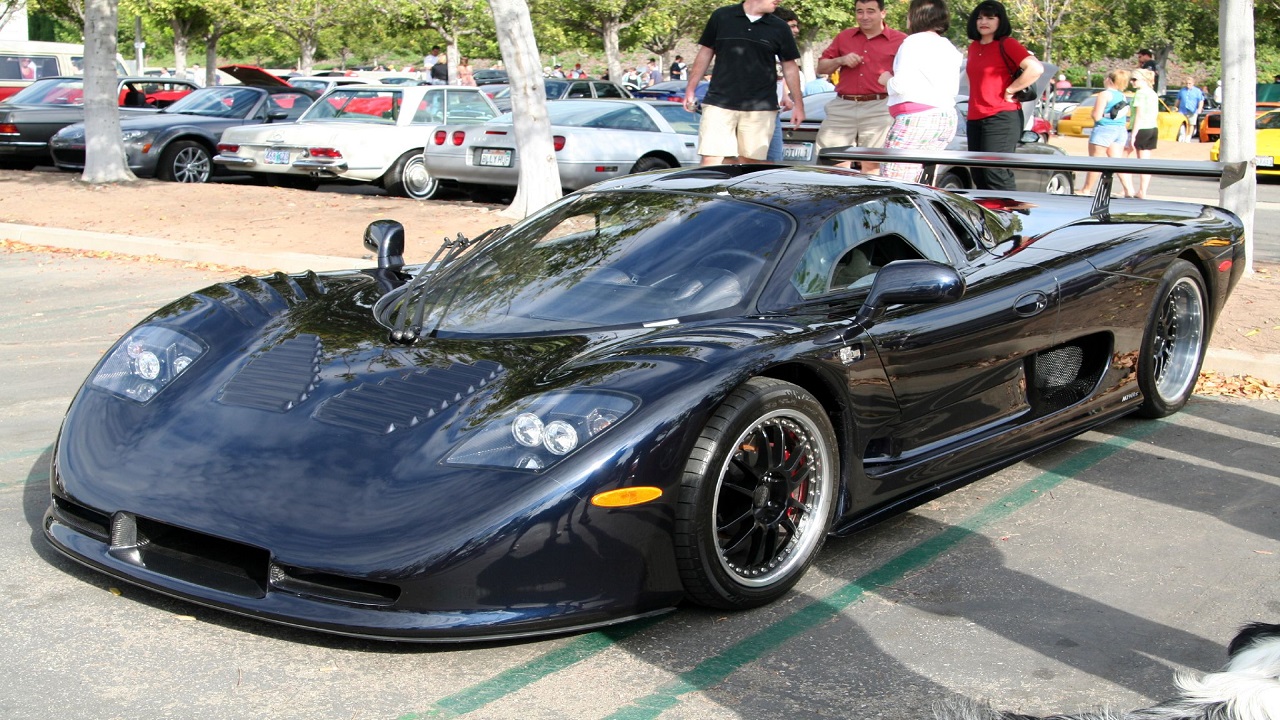
The Mosler MT900 is a high-performance sports car introduced in 2001 by the now-defunct Mosler Automotive. It has three submodels: the MT900R (racing version), the updated MT900S (2005), and the MT900S Photon (performance package).
Saleen S7

The Saleen S7 is an American-made high-performance sports car designed by Saleen Automotive Inc. Produced from 2000 to 2009, it remains one of the most underrated modern supercars. Known as a “beast that needed taming”, the S7 was developed for the global racing scene and has earned its place among the sports car legends.
Hennessey Venom GT

The Hennessey Venom GT is a unique American-made postwar sports car. In 2014, it became the world’s fastest car, reaching speeds over 270 mph. With a powerful 1,817bhp engine, the Venom GT is designed for both speed and style.
SSC Ultimate Aero

The SSC Ultimate Aero, produced by SSC North America from 2004 to 2013, is a mid-engined sports car that held the world speed record from 2007 to 2010. It features a turbocharged 6.3-liter V8 engine producing 1,183 horsepower.
Fisker Karma

The Fisker Karma is a luxury plug-in hybrid sports sedan produced from 2011 to 2012. Known for its innovative design, it pioneered hybrid luxury vehicles. Measuring nearly 196 inches long and 78 inches wide, it’s slightly smaller than a 2018 Mercedes S-Class but classified as a sub-compact due to interior space.
Zimmer Golden Spirit
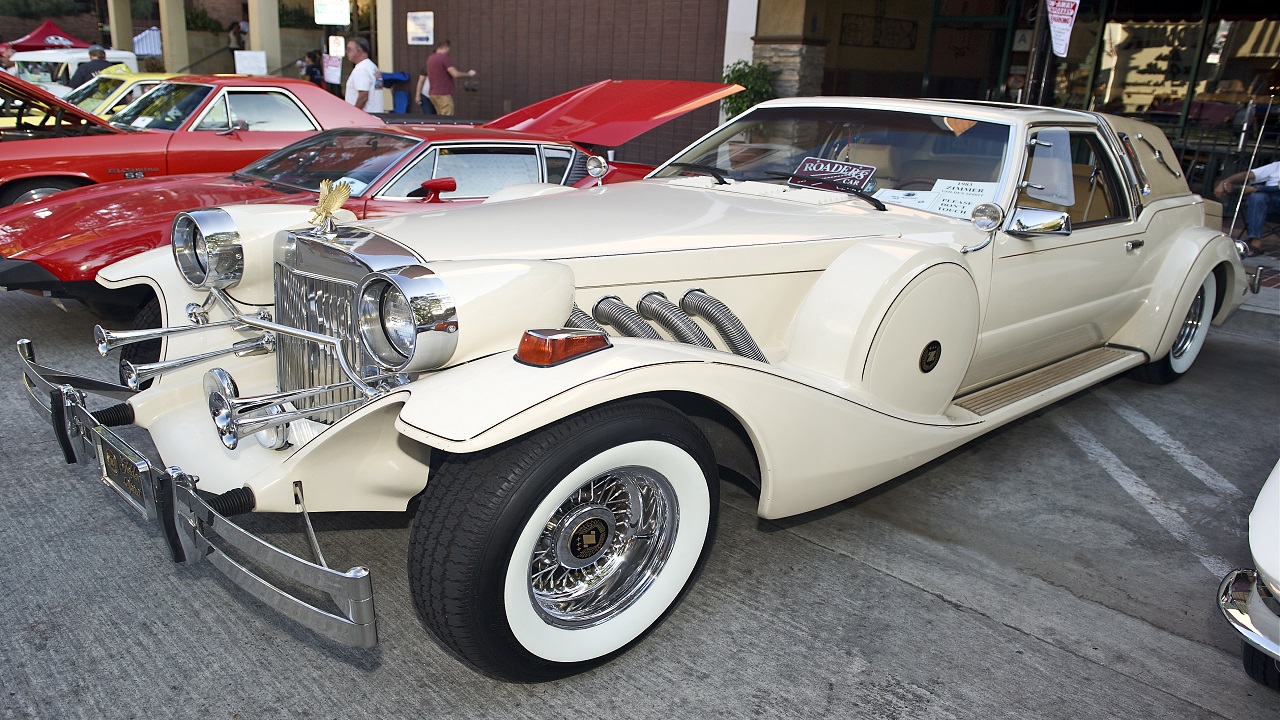
The Zimmer Golden Spirit is an American neoclassical car produced from 1978 to 1988. Designed to resemble 1930’s luxury vehicles, it was built on a Ford Mustang foundation. The Golden Spirit’s interiors came with deluxe features like leather Recaro seats and Nardi steering wheels. Under the hood, the Ford’s fuel-injected 5-liter engine added modern performance to its vintage look.
Spectre R42

Manufactured by British boutique automobile manufacturer, Spectre Supersports Ltd, the R42 was a remarkable 2-seater, mid-engined, rear-wheel-drive sports car. Powered by a Ford Mustang Cobra’s 4.6L V8, it boasted impressive performance figures such as 350hp, a 0-60mph time of 4.5 seconds, and a top speed of 175mph.
Byers SR100

The Byers SR100, a fiberglass sports car from the 1950s, was designed by Jim Byers. Its striking design led Road & Track editor John Bond to ask, “Is the Byers SR100 the World’s Most Beautiful Sports Car?” Built on various chassis with different engines, it was popular among racers and car enthusiasts. Today, the Byers SR100 is a cherished classic, embodying mid-century American innovation and style.
Scarab Sports Car

Built by Lance Reventlow, heir to the Woolworth fortune, it was designed to compete with European racing giants. During its heyday from 1958 to 1963, the front-engine Scarabs achieved impressive results in races, including 39 overall wins and 32 podium finishes. Featuring an aluminum body and powerful engine, the Scarab redefined racing excellence.
Victress S1A

Designed in the early 1950s, it features a fiberglass body and often used early Ford mechanicals. With a wheelbase between 99 and 102 inches, the Victress S1A is a sleek, nimble vehicle that represented America’s growing enthusiasm for sports cars. Notably, the 1954 “Motor Trend” Victress S1A connects with influential figures like George Barris and Wally Parks. Fast and stylish, the Victress S1A perfectly exemplifies America’s postwar sports car era.
La Dawri Conquest

The La Dawri Conquest was a postwar American sports car designed by Les Dawes. It was known for its stylish fiberglass body and lightweight construction. Dawes’ company, LaDawri Coachcraft, produced Conquest bodies for various chassis and engine configurations. One example is the Olds Rocket V8-powered Conquest, which used a Henry J chassis at a 100-inch wheelbase.
Fiberfab Jamaican

The Fiberfab Jamaican is a rare American sports car built in the late 1960s. Its sleek design features a lightweight fiberglass body on a tubular steel chassis. Its design was influenced by coachbuilt Italian sports cars of the era, making it a unique American automotive gem. Notably, only 250-300 of the Jamaican II variant were produced, adding to its rarity and appeal.
Kellison J-4

The Kellison J-4 was a sleek and powerful sports car from the 1950s. Its fiberglass body and race-inspired design made it stand out from other vehicles of the era. The J-4 was designed by Jim Kellison, a USAF veteran and hot rod builder, and was a direct competitor to the Corvette. The car was not only stylish but also engineered for strength and performance.
Allard K2
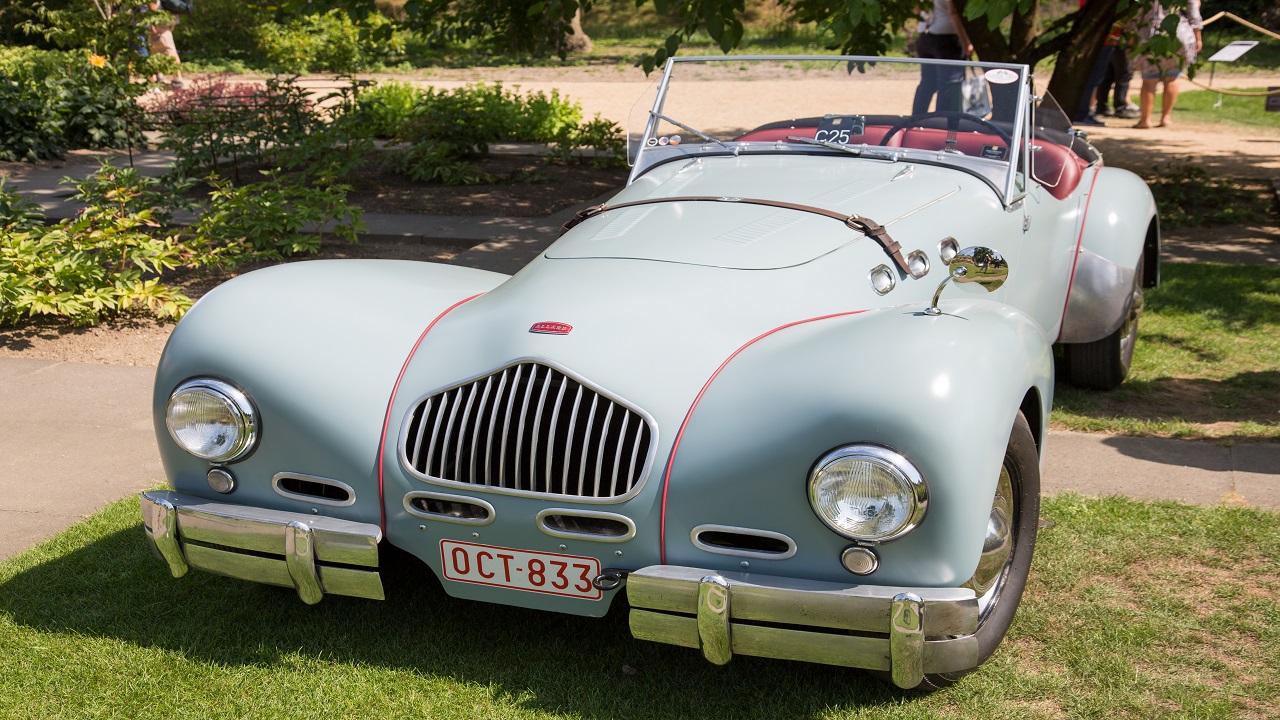
The Allard K2 was a unique sports car produced between 1950 and 1952. It married American V-8 engines with lightweight English chassis and became a pioneer in postwar sports roadsters. This car boasted impressive performance on both roads and tracks. With its distinctive styling, the K2 remains an exclusive automobile for collectors.
Cisitalia 202
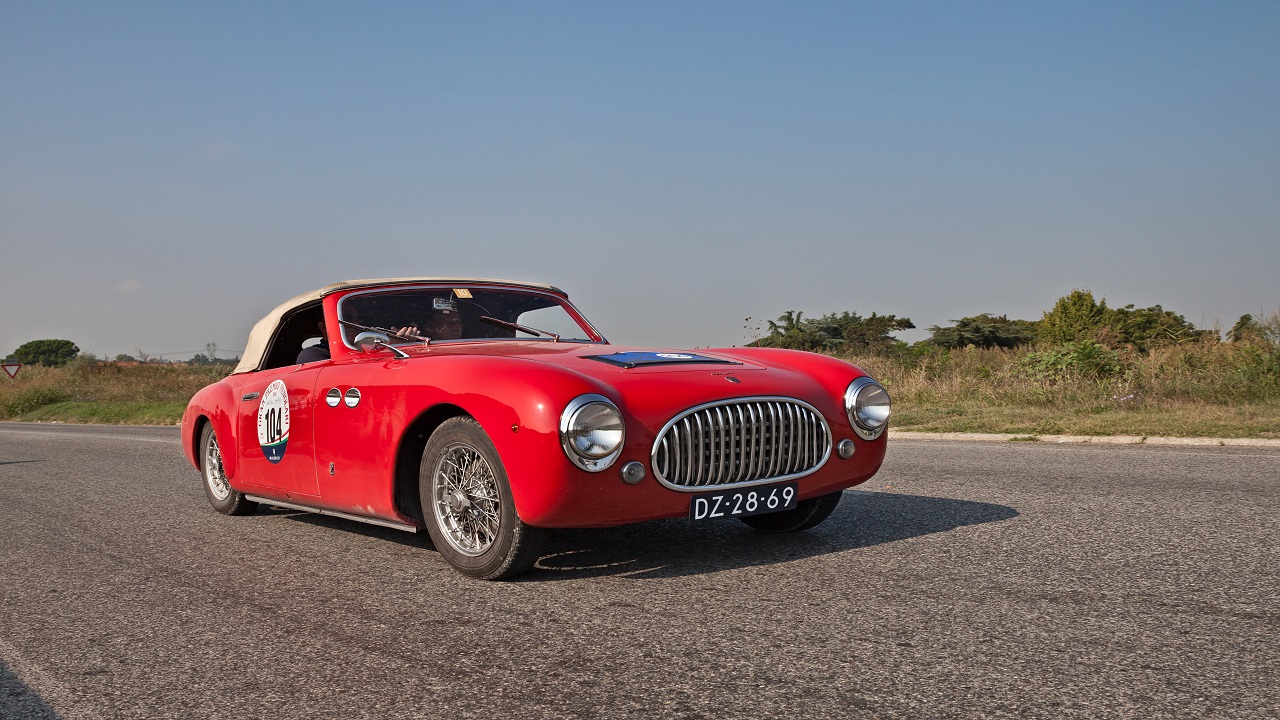
With a sleek, unified body, it became an influential part of the Italian automotive design movement. Featuring a 1.1-liter engine that produced up to 70 horsepower, the 202 offered impressive performance. Its design even earned it a place in the New York MoMA for fifty years.
Devaux Coupe

Devaux produced only 52 of their 6-75 Sports Coupe models, with only seven of those being in the Sports Coupe configuration. Featuring an L-head six engine, the Devaux Coupe boasted unusual features for a modestly priced car in its era. The car’s production began in Grand Rapids, Michigan, in 1931 but unfortunately, by 1932, the DeVaux-Hall company faced financial difficulties and ceased operation.
Fibersport Meteor

The Fibersport Meteor was a unique American postwar sports car, created by John Mays and John Burmaster. These craftsmen from Bloomington, Illinois, designed a fiberglass-bodied sports car in 1953. Their creation showcased fiberglass technology, a popular material for car enthusiasts then. The Meteor’s sleek design and smooth curves earned it a place among America’s forgotten sports cars.
Sorrell SR-100
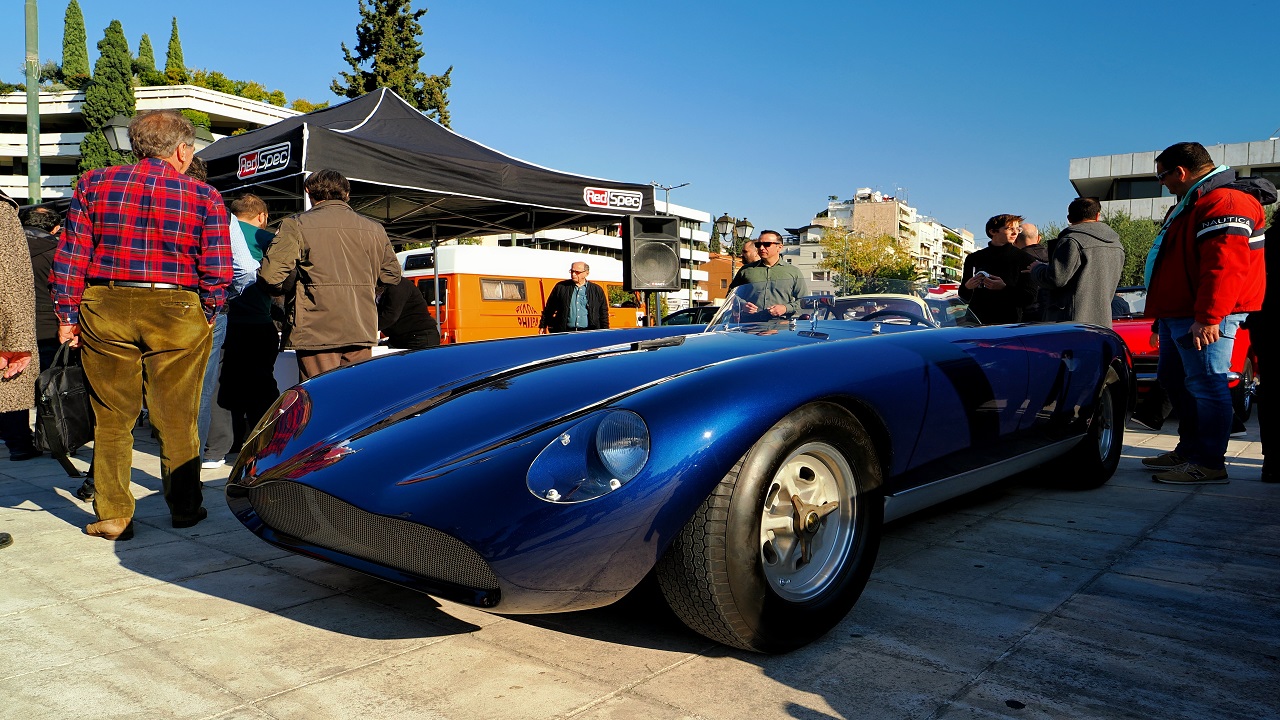
Designed by Bob Sorrell, the Sorrell SR-100 debuted in November 1953 at the Petersen Motorama in Los Angeles. Initially made from aluminum, it later switched to fiberglass for production. Its eye-catching bodywork won much admiration at the event.
With a sleek, racing-oriented style, the SR-100 was mounted on a Kurtis 500KK chassis, leading to the production of fiberglass versions for customers.
Stanford Vanguard Roadster
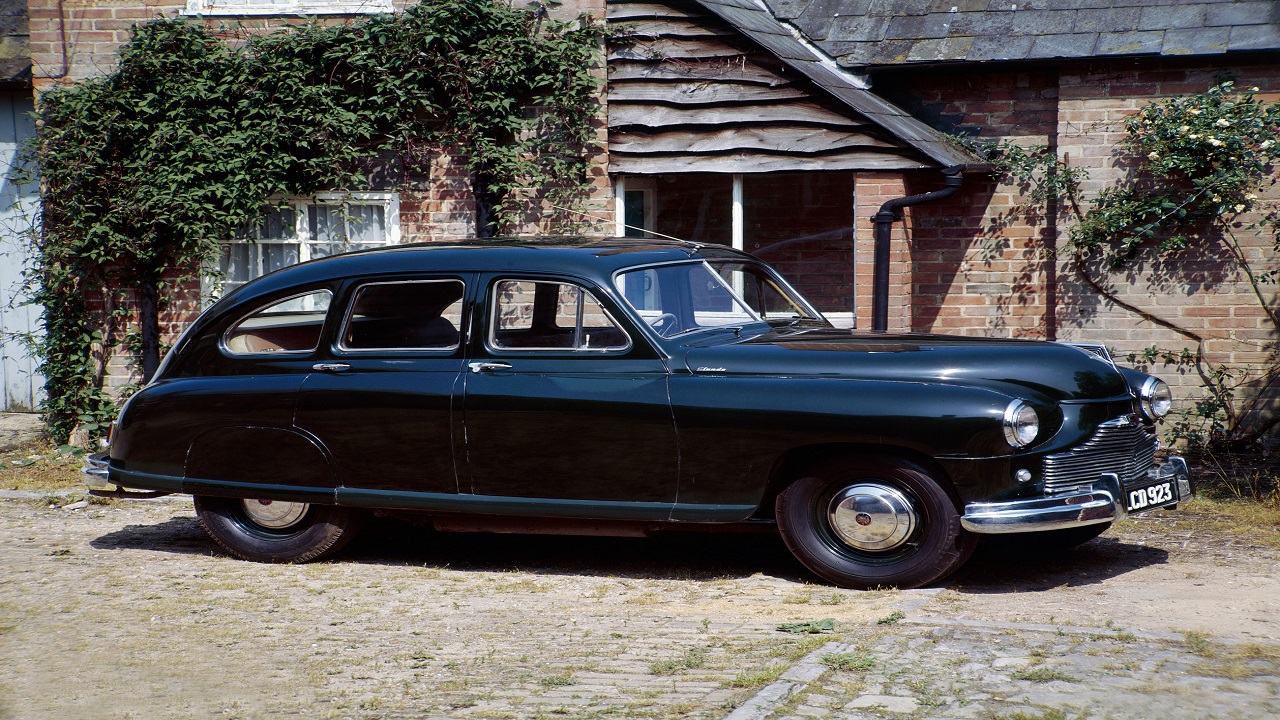
The Stanford Vanguard Roadster is a rare postwar sports car, boasting a sleek design and performance-oriented features. It winked at car enthusiasts in the late 1940s, a perfect reemergence of passion and invention after wartime.
Sabra Sport

The Sabra Sport was a unique sports car hailing from Israel in the 1960s. Featuring a sleek design, it came in two models: roadster and the rarer hardtop GT. In 1963, with the help of the Alexander Tuning kit, the horsepower increased to 90. Production ran from 1961-1968, with a total of 379 Sabra Sports built. Today, the Sabra Sport is cherished by collectors and remembered as a fascinating piece of automotive history.
Sabre Six
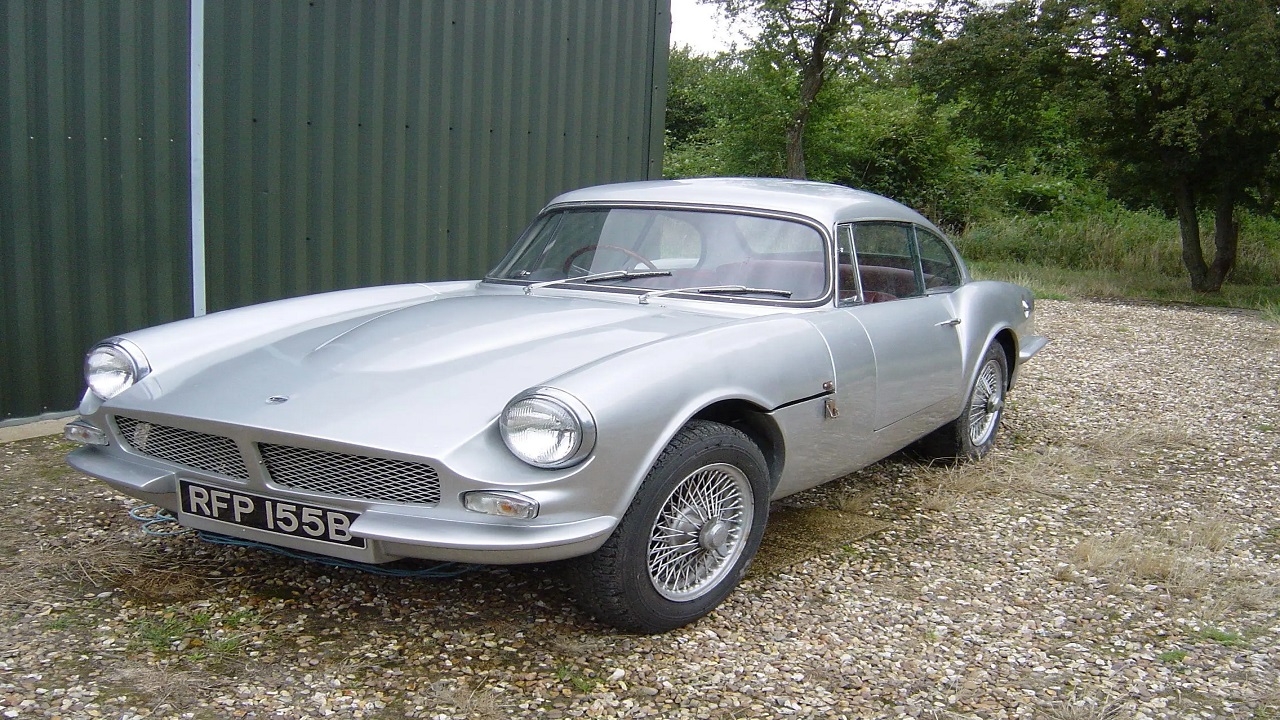
The Sabre Six was a unique postwar sports car by Reliant. With a bold, innovative design, it stood out among its contemporaries. Its friendly demeanor and performance earned it a special place in automotive history.
Shay Model A Roadster

Produced by Shay Motors Corporation around 1980, this fiberglass-bodied sports car features a rumble seat and a side-mounted spare wheel, giving it a charming vintage appearance. With its beige paint and black soft top, the Shay Model A Roadster manages to capture the essence of the original while offering updated performance and reliability.
TVR Grantura

The TVR Grantura is a classic British sports car built between 1958 and 1967. This vehicle marked the beginning of TVR’s production cars and went through five generations – Mark I to Mark IV, including the 1800S.
With roots in Blackpool, England, this lightweight sports car featured front engine, rear-wheel drive (FR) layout. Boasting a fiberglass body, the Grantura offered excellent power-to-weight ratio, especially when its American counterpart, known as the Griffith 200 and 400 models, employed a Ford 289 V8 engine.
Kurtis Sport Car
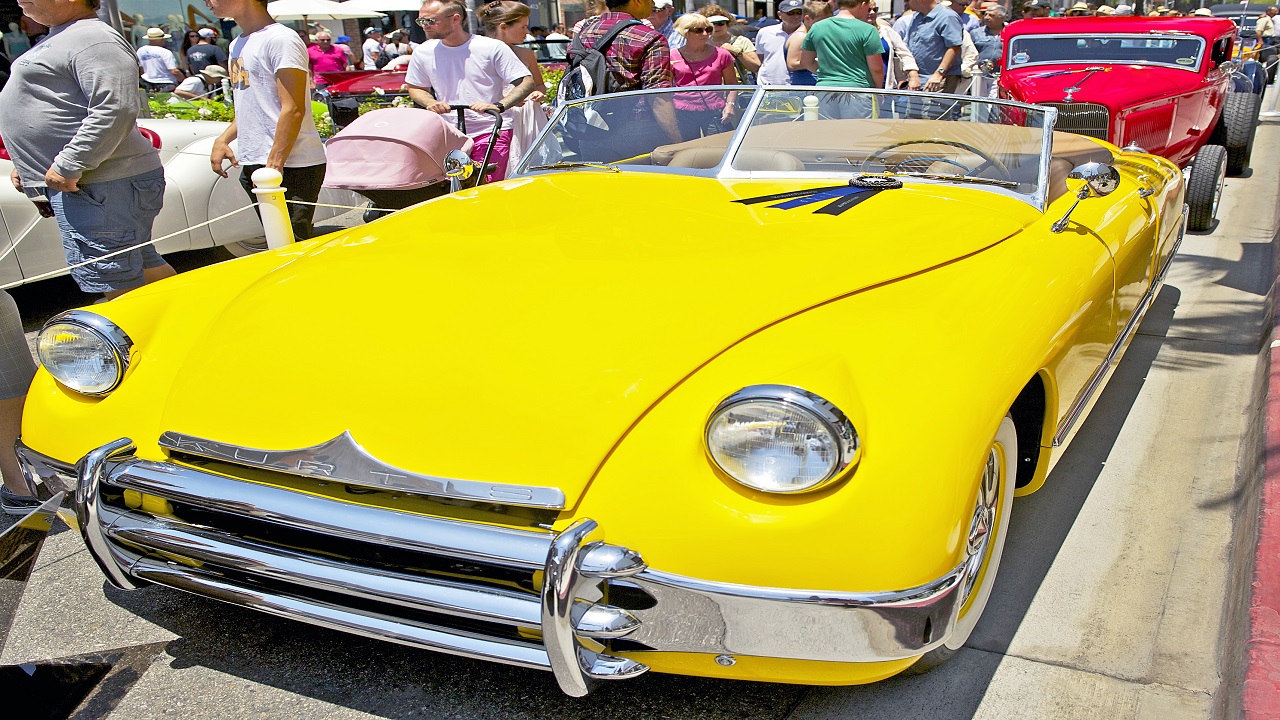
The Kurtis Sport Car was designed by Frank Kurtis and emerged in 1949. It featured a flathead Ford V8 engine and used Ford brakes, steering, and suspension components. Cunningham The 1948 Kurtis-Omohundro Comet is a notable model. These vehicles are rare and highly sought after by collectors today.
Westfield XI

Known for its fiberglass body and enjoyable build process, the Westfield XI offers a chance for individuality in the finished result. The car trades modern features for pure connection, resulting in an attention-grabbing sports car.
This faithful reproduction of the Lotus Eleven originated in 1982. Today, Westfield Chesil Ltd continues to produce the Westfield XI 2024, an opportunity to build the British sports car of your dreams.
Yankee Clipper

Based on the Glasspar G2 chassis, it featured a sleek design and innovative materials. Its creator, Paul Strassberger, aimed to build a high-quality vehicle using advanced fiberglass techniques. This sports car was a rarity, as production numbers remained low, making it a true hidden gem in automotive history.
Avanti II

The Avanti II was a sports coupe, marketed through various ownership from 1965 to 2006. A successor to Studebaker’s original Avanti, it aimed to combine design and performance in an innovative package. Its unique design and land-speed records attracted attention, but fell short due to production issues.
Saber Tiger
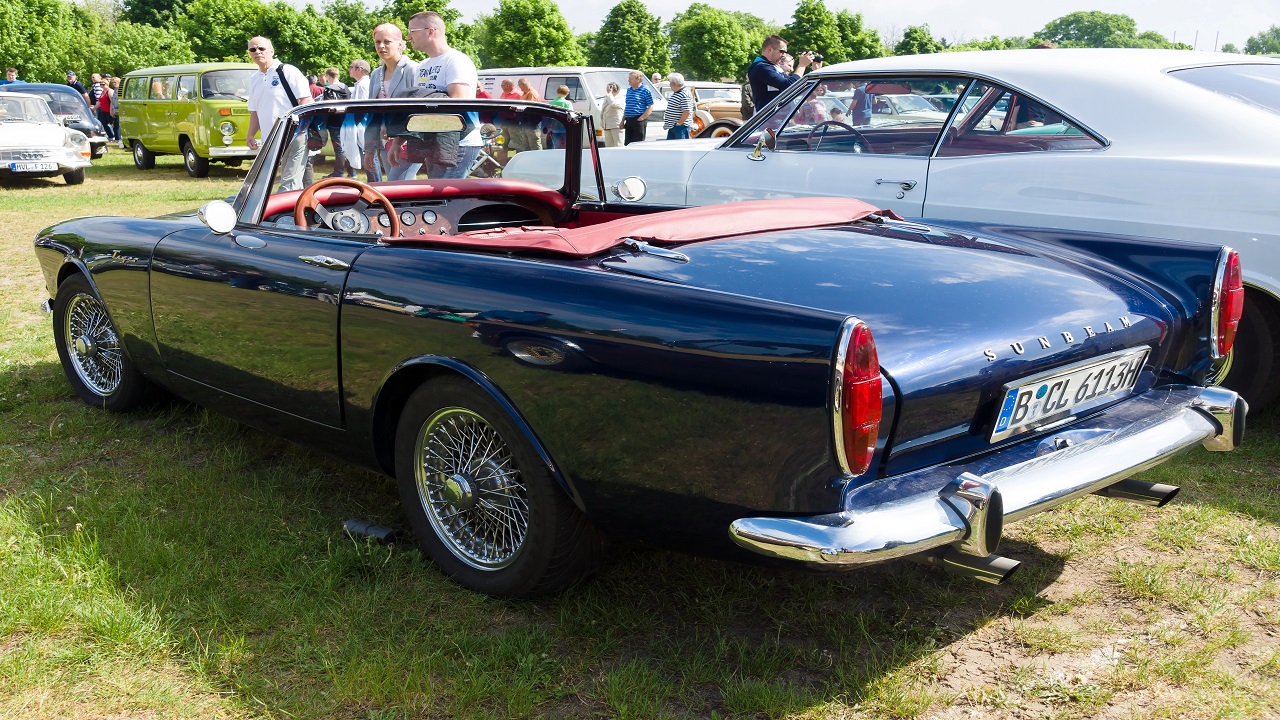
The Saber Tiger is one of America’s forgotten postwar sports cars from the late 1940s to early 1950s. This unique vehicle featured a fiberglass body and an eye-catching design. These elements made the car a rare gem in the world of American sports cars. Today, the Saber Tiger remains a remarkable piece of automotive history.
Victress C2

The Victress C2 was an innovative sports car from the mid-1950s. Designed by Merrill Powell, it showcased a sleek fiberglass body and Italian-inspired styling. Notably, the C2’s design was considered ahead of its time. The Victress Manufacturing company produced various sports car models, gaining popularity during the 1950s.
20 Classic Cars That Are The Market’s Best-Kept Secrets

Classic cars are admired for their timeless design, nostalgia, and unique features absent in modern vehicles. Some of the best deals in the second-hand market are American-made cars. You might be surprised by the list of affordable vintage cars you haven’t heard of. If you’re looking to restore a classic car without spending a fortune, these are great options to consider.
READ GUIDE HERE: 20 Classic Cars That Are The Market’s Best-Kept Secrets!



